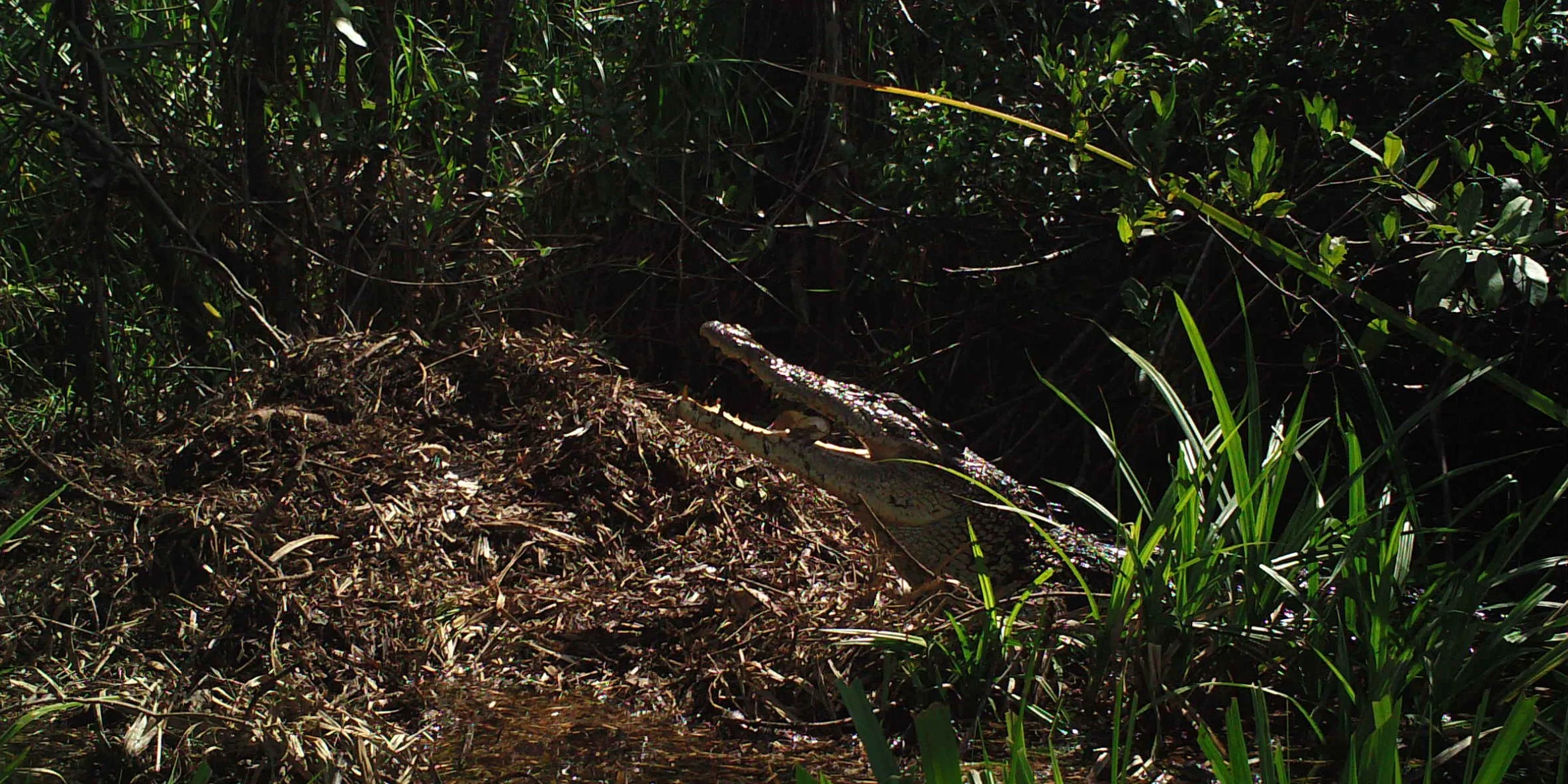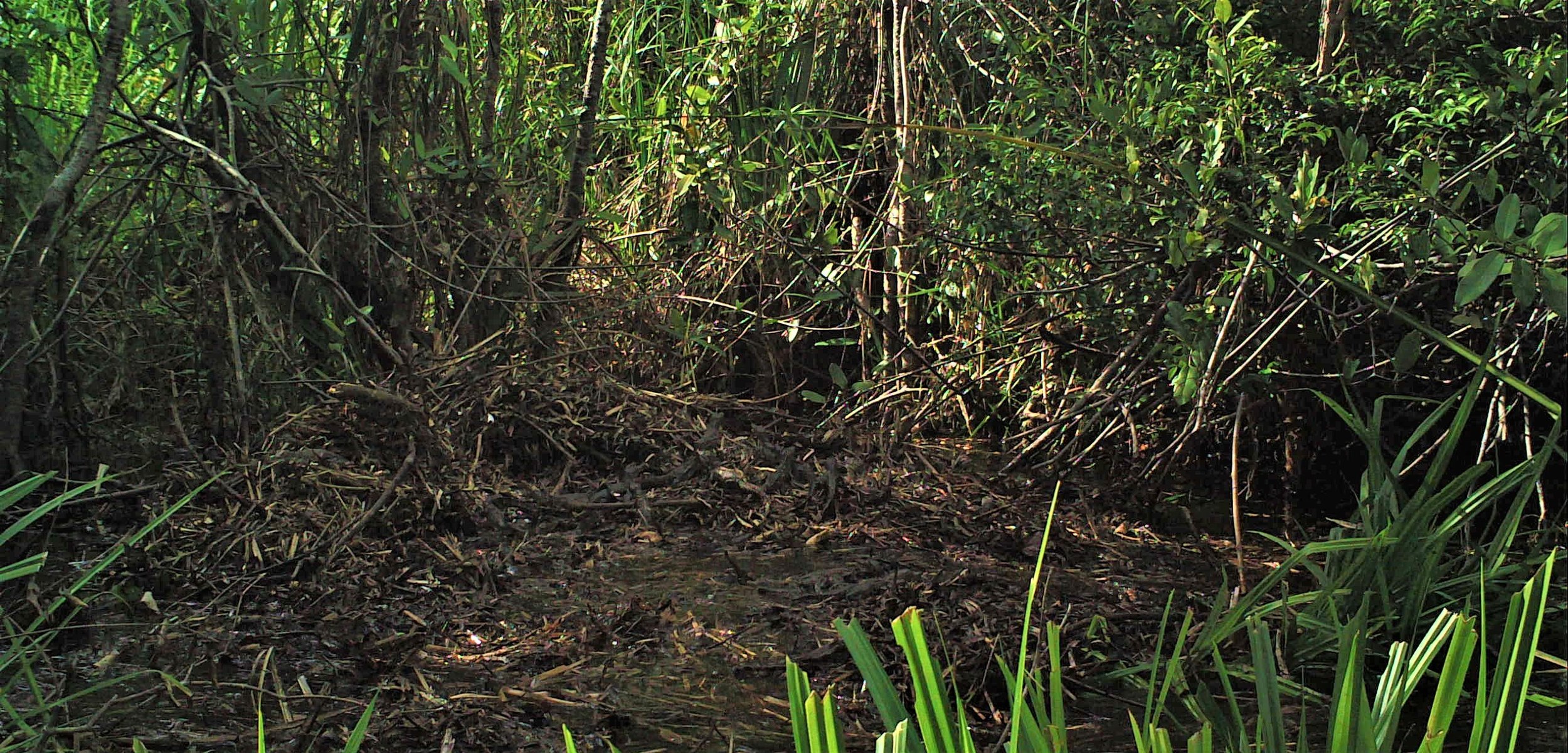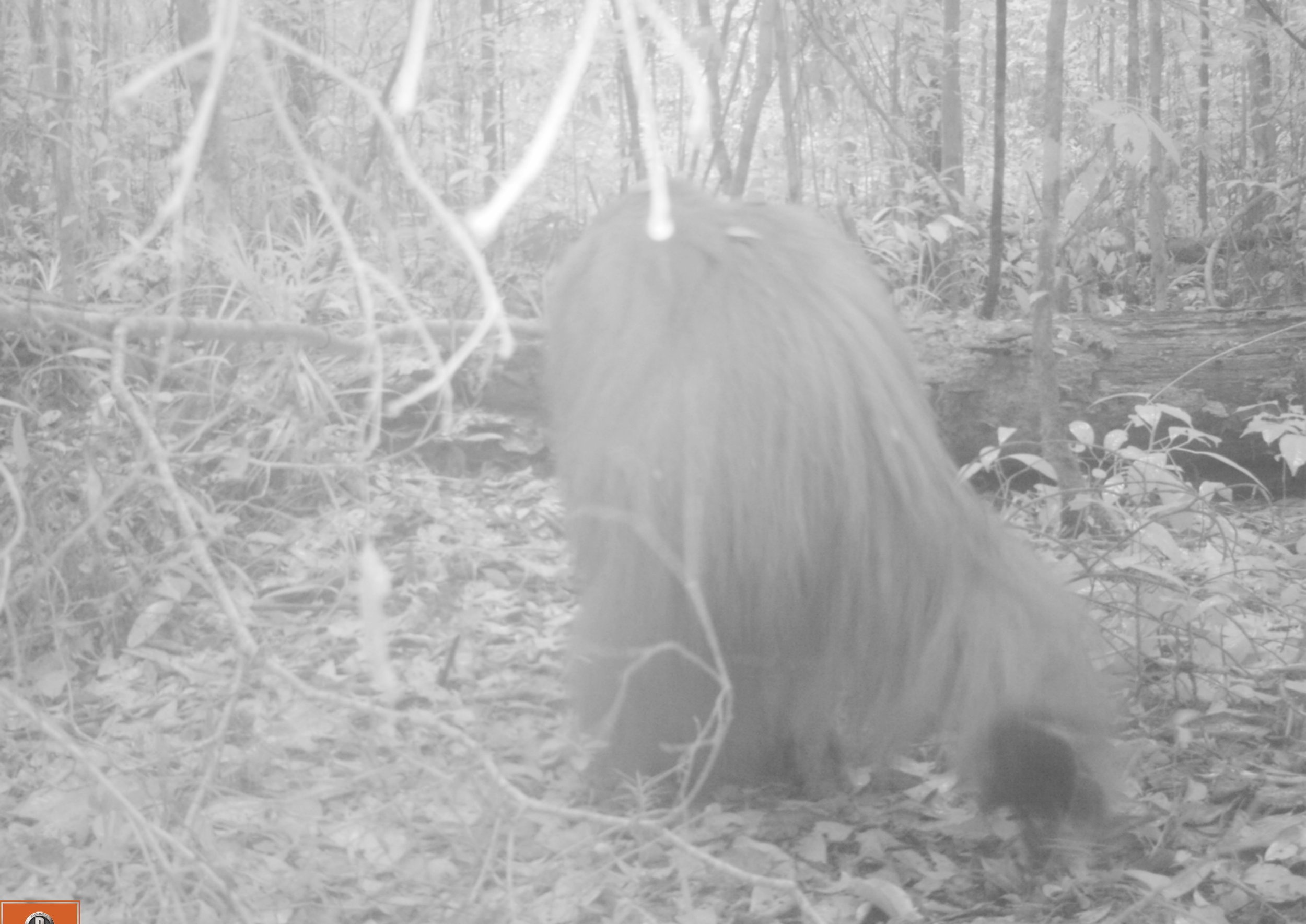Reptiles may not be considered the most maternal of creatures, but newly hatched crocodiles are in fact looked after by their mothers until they are strong enough to fend for themselves- often for as long as two years!
Our monitoring team located in Tanjung Puting National Park were fortunate enough to witness a mother and her nest using remote camera traps so as not to disturb her natural behaviour.
She was observed guarding the nest, listening to her young’s calls as they hatch, and then gently clearing a path for them to emerge from the undergrowth.
If you listen carefully, you can even hear the hatchlings calling from the nest.
Footage such as this is rarely seen, so to be able to use technology in order to witness this intimate behaviour without disturbing the animals is remarkable.
Once hatched and emerged from the nest, the young can be seen exploring their new home.
Hiding in plain sight: After a closer look, several hatchlings can be seen amongst the vegetation.
To be able see this behaviour is exciting for all of us, but also an indicator of the health of these important waterways. Watch this space for any future observations!
























